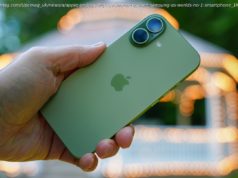Exclusive: In lab and crowdsourced tests, we found that the iPhone XS has better LTE performance than the iPhone X, but that the Samsung Galaxy Note 9 still beats it.
The iPhone XS is a huge step up from the iPhone X when it comes to LTE download speeds, according to exclusive new data from Cellular Insights and Ookla Speedtest. But it still doesn’t quite match the Qualcomm X20 modem used in the Samsung Galaxy Note 9.
The new iPhone XS and XS Max use an LTE modem that we’ve never seen used anywhere else: the Intel XMM7560. The 7560 is Intel’s first modem to support all four US wireless carriers, letting Apple drop Qualcomm, the world’s dominant high-end modem supplier.
To check hardware capabilities, we had Cellular Insights look at the iPhone XS and other devices with advanced Rohde & Schwarz measurement equipment. For real-world results, we used the week of September 24,2018 from Ookla’s massive crowdsourced Speedtest Intelligence database.
Last year, Cellular Insights compared the Intel-powered and Qualcomm-powered models of the iPhone X and found that Qualcomm’s modems provided faster performance at nearly every signal level. It also compared the Google Pixel 2 and the Samsung Galaxy Note 8 to the Qualcomm-powered iPhone, finding that Apple’s lack of 4×4 MIMO antennas made a big difference in speed.
This year, Apple’s new iPhone XS and XS Max phones both have 4×4 MIMO, which should put them closer to par with other leading flagships. Last year, we tested the phones with 2×2 MIMO, meaning the phones were using two download antenna branches. But 4×4 MIMO is more widespread than it was a year ago, both on the handset side and on the carrier side, so we thought it was time to put four on the floor. Or in the air, really.
Let’s take a look at the results.
We compared the US model of the iPhone XS Max with the Samsung Galaxy Note 9, last year’s Intel-powered model of the iPhone X, and the Google Pixel 2. The Google Pixel 3 is coming out soon, but it isn’t out yet, and we didn’t have a Qualcomm-powered model of the iPhone X running iOS 12 to compare.
Our tests used a 20MHz channel of Band 4, which is used by AT&T, T-Mobile, Verizon, and the major Canadian wireless carriers, and attenuated an LTE signal from a strong -85dBm until the modems showed no performance.
The first thing you see is the effect of the new 4×4 MIMO antennas. In good signal conditions, they double the phone’s speeds, but they also help in weak signal conditions. Apple was the last major manufacturer to adopt 4×4 MIMO, and it was desperately needed.
Between the three 4×4 MIMO phones, you can see that in good signal conditions, the Qualcomm-powered Galaxy Note 9 and Google Pixel 2 still do a bit better than the iPhone XS Max. But as signal gets weaker, the XS Max really competes, showing that it’s well tuned.
Let’s zoom in on very weak signal results. At signal levels below -120dBm (where all phones flicker between zero and one bar of reception) the XS Max is competitive with the Qualcomm phones and far superior to the iPhone X, although the Qualcomm phones can eke out a little bit more from very weak signals.
If you’re wondering how the iPhone XS compares with the XS Max, they’re pretty much the same. With the same modem and the same antennas, we saw only very marginally better performance at a few signal levels from the XS Max—not enough that anyone would notice in the real world.
This testing would have been impossible without key equipment from Rohde & Schwarz, the global leader in test and measurement of mobile devices and networks. R&S provided Cellular Insights with the cutting-edge CMWFlexx solution consisting of two CMW500 Wideband Communication Tester boxes, a CMWC Controller, and a R&S TS7124 RF shielded box equipped with four Vivaldi antennas for up to 4×4 MIMO, ensuring high reproducibility of near-field OTA MIMO measurements.
We saw R&S’s solution recently at Mobile World Congress Americas and we were blown away by its power and flexibility. The CMWFlexx can simulate pretty much any signal condition you can think of, including arcane band combinations, signal handoffs, and even 5G. It’s used by both handset makers and wireless carriers to test and verify their phones.
That’s the lab. How about on the streets? We dipped into Ookla’s Speedtest Intelligence database to look at results from the week of September 24, the first week a large number of new iPhones were in retail customers’ hands.
The iPhone XS shows, on average, 6.6Mbps faster download speeds on all US carriers than the iPhone X, according to Speedtest Intelligence. In Canada, that difference jumps to a massive 20.2Mbps.
Here in the US, AT&T shows the biggest improvement from the X to the XS, with speeds jumping 8Mbps. T-Mobile comes in at 6.6Mbps, Verizon at 5.7Mbps, and Sprint at 2.3Mbps.
You’ll find an even more dramatic change if you’re upgrading from an iPhone 7. Speedtest Intelligence shows a 9.9Mbps jump from the iPhone 7 in the US, and a 31.6Mbps jump in Canada.
All that said, the Samsung Galaxy Note 9 with its Qualcomm X20 modem still performs a little better than the iPhone XS in the US and Canada. In the US, the Galaxy Note 9 shows mean LTE download speeds of 43.2Mbps to the iPhone’s 38.9Mbps for the week of September 24. In Canada, the Galaxy Note 9 shows speeds of 97.7Mbps to the iPhone XS’s 85.4Mbps.
While our lab tests show the Pixel 2’s excellent performance in low-signal conditions, that phone is, on average, slower than any of this year’s phones or the Galaxy Note 8 in the Speedtest Intelligence database. That’s because differences in high results with good signal will move the Speedtest average more.
If the iPhone XS is so much better than the X, what explains the frustrated people on Reddit who say they’re having signal problems? I think the secret is in this chart: Software matters.
We saw a noticeable jump in performance from iOS 11 to iOS 12 on our Intel iPhone X unit, bringing it closer to the initial performance of the Qualcomm iPhone X.






